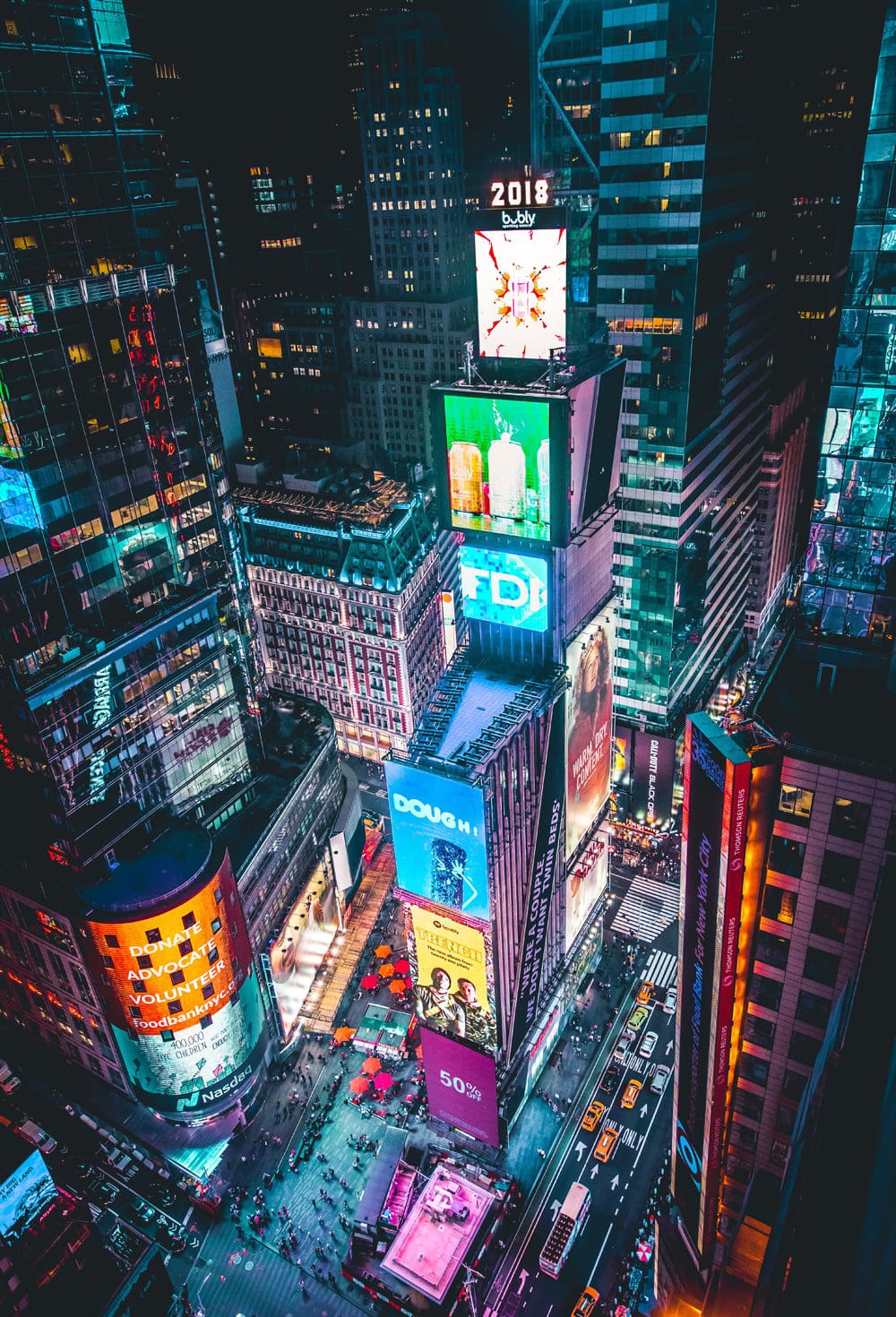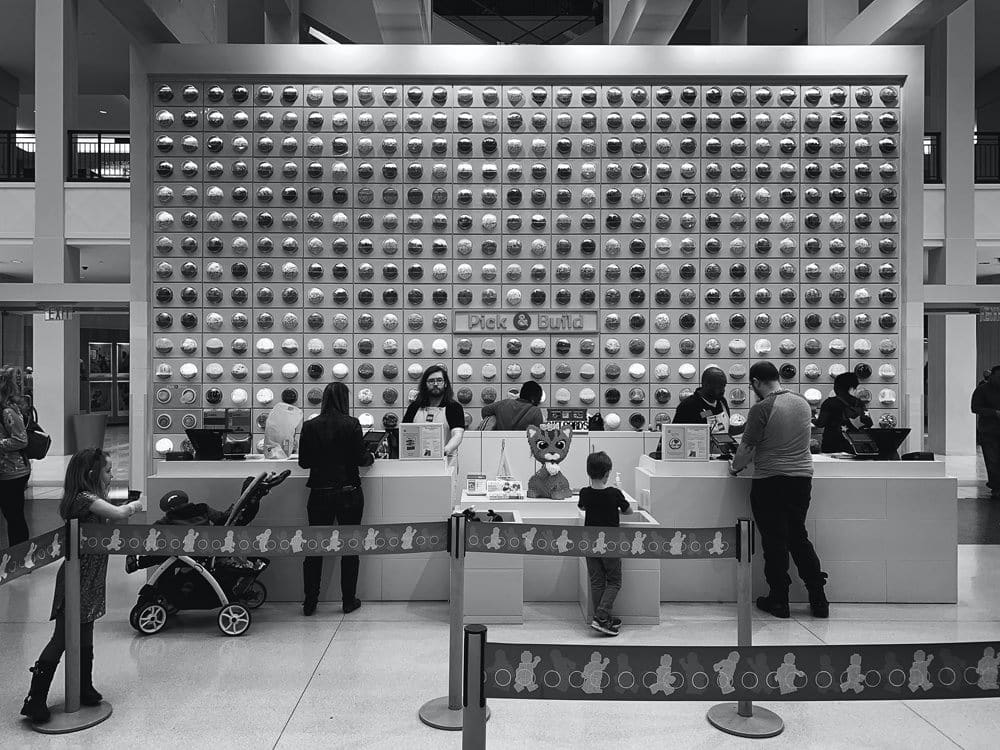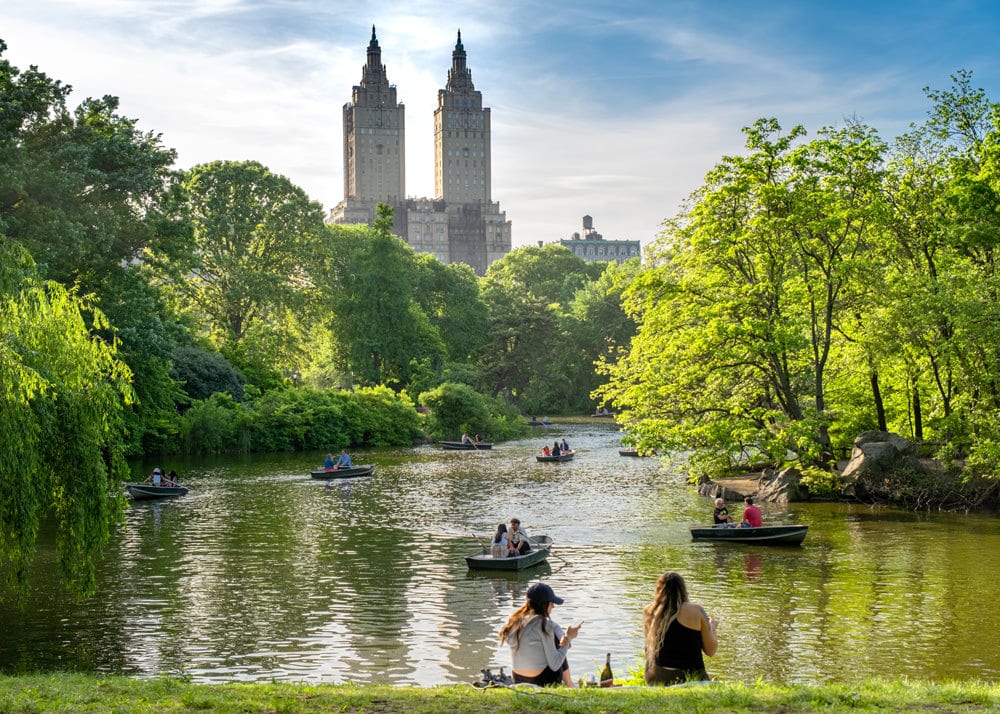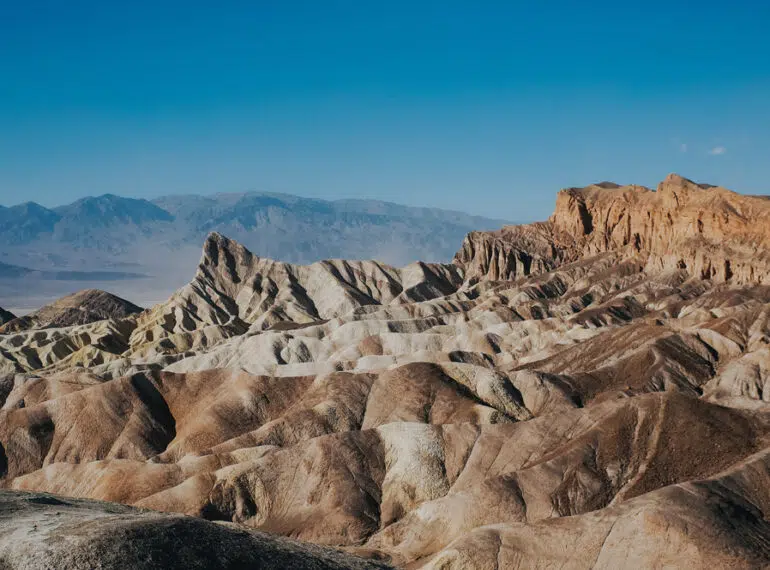
The top 25 sights in the USA
1. Times Square (New York)

Times Square is a major commercial hub, tourist destination, entertainment center and neighborhood in Midtown Manhattan in New York City*. It is formed by the intersection of Broadway, Seventh Avenue and 42nd Street. Together with the adjacent Duffy Square, Times Square is a five-block-long arched plaza between 42nd and 47th Streets.
Brightly illuminated by numerous billboards and advertisements, the square is also known as the “crossroads of the world”. It is one of the busiest pedestrian areas in the world and is also the center of the Broadway Theater District and an important center of the global entertainment industry. Times Square is one of the most visited tourist attractions in the world and attracts an estimated 50 million visitors every year. Around 330,000 people pass through Times Square every day, including many tourists.
Times Square, formerly known as Longacre Square, was renamed in 1904 after the New York Times moved its headquarters to the then newly built Times Building, now known as One Times Square. The annual New Year’s Eve Ball Drop has been held here since December 31, 1907, and still attracts over a million visitors to Times Square every year. Times Square, or more precisely the intersection of Broadway and 42nd Street, is also the eastern terminus of the Lincoln Highway, the first road across the United States.
Times Square functions as a city square, but is geometrically not a square, but rather resembles a fly with two triangles running roughly north and south from 45th Street, where Seventh Avenue intersects with Broadway. The area is bounded by West 42nd Street, West 47th Street, 7th Avenue and Broadway. Broadway runs diagonally through the horizontal and vertical street grid of Manhattan established by the Commissioner’s Plan of 1811, this intersection forms the “bow tie” shape of Times Square.
Times Square is the official name of the southern triangle, below 45th Street, but the northern triangle is officially called Duffy Square. It was dedicated in 1937 to World War I chaplain Father Francis P. Duffy of New York City’s 69th Infantry Regiment and houses a memorial to him. There is also a statue of composer and entertainer George M. Cohan, and the TKTS box office for Broadway and Off-Broadway theaters.
Tourists love Times Square primarily because of the oversized neon signs and display boards, and it is also a very popular photo opportunity. If you are ever in New York, you should definitely not miss out on a visit to Times Square.
Ad
2. Mall of America (Bloomington, Minnesota)

The Mall of America (MOA) is a shopping center in Bloomington*, Minnesota, a suburb of the Twin Cities in Minnesota, United States. It is located southeast of the intersection of Interstate 494 and Minnesota State Highway 77, north of the Minnesota River and across the interstate from Minneapolis St. Paul International Airport. It opened in 1992 and is the seventh-largest shopping center in the world and the largest in the Western Hemisphere.
The mall is managed by the Triple Five Group (which in turn is owned by the Ghermezian family, along with the West Edmonton Mall and the American Dream). Around 40 million people visit the mall each year, with eighty percent of visitors coming from Minnesota, Wisconsin, Iowa, Nebraska, the Dakotas, Illinois, Ohio, and Canada.
In addition to the mall, there are other hotels, restaurants and stores outside the shopping center. The Mall of America and the additional stores are located in the South Loop District in Bloomington, Minnesota.
Attractions around the Mall of America
Nickelodeon Universe, formerly Camp Snoopy, is an indoor amusement park in the shopping center. The park features roller coasters and numerous other rides and attractions, including many that have nothing to do with Nickelodeon. It is the largest indoor amusement park in the United States. Unlike many other indoor amusement parks, Nickelodeon Universe has a lot of natural greenery in and around the park, and the floor has large height differences — the highest level in the park is 4.6 meters above the lowest. Rides include the SpongeBob SquarePants Rock Bottom Plunge, Fairly Odd Coaster, Back at the Barnyard Hayride and Avatar Airbender rollercoasters, as well as a thrill ride called BrainSurge. There is also a mini golf course called Moose Mountain. This mini golf course has eighteen holes and a relatively fast artificial turf surface.
Special recommendation: At Sea Life Minnesota Aquarium, guests travel through a 91-meter-long, curved tunnel through 4.3 meters of water where they can see more than 4,500 sea creatures, including sharks, turtles, stingrays and many more. Sea Life Minnesota Aquarium also offers special events such as sleepovers, scuba diving, snorkeling, and birthday parties.
Ad
3. Bryce Canyon National Park

Bryce Canyon National Park is located in southwestern Utah, around 400 kilometers northeast of Las Vegas and just under 150 kilometers from Zion National Park. Bryce Canyon National Park is particularly worth a visit due to its unique orange-gold rock pyramids and its tremendous views at an altitude of over 2,000 meters. Bryce Canyon is also a highlight for hiking, with countless trails and wonderful viewpoints.
Usually, you first drive to the Visitor Center, which is relatively close to the park entrance. There are numerous parking areas around the Visitor Center, from where you can visit the main hiking trails and most important viewpoints: Sunset and Sunrise Point, as well as Bryce Point and Inspiration Point are highly recommended.
After an extensive hike, you should then drive further south and stop at various other viewpoints by car. The Natural Bridge and Rainbow Point at the very southern end of the park, which attracts slightly fewer visitors than the entrance, are particularly worth mentioning.
As the name of the viewpoints suggests, you should definitely visit Bryce Canyon in the evening or morning at sunset or sunrise, when the unique rock formations are illuminated at an angle by the sun.
A little warning: Bryce Canyon often gets quite crowded from May onwards, even on weekdays. It’s still not quite as bad as in Arches National Park or the Grand Canyon, but you should be prepared not to see many quiet corners.
Bryce Canyon offers numerous great trails of varying lengths and mostly of easy to moderate difficulty. The ascents and descents are of course strenuous, especially as it can get very hot in the canyon in summer — you should definitely take several liters of water and headgear with you. The altitude can also affect your circulation. However, the paths themselves are now mostly well paved.
Tip: Be sure to hike part of the Rim Trail, which is over 17 kilometers long, and then perhaps choose the easy Queen’s Garden Trail (3 kilometers) from Sunrise Point. Experienced hikers can opt for the somewhat more strenuous Navajo Trail (2 kilometers), which leads beautifully down into the canyon and can also be combined with the Queen’s Garden Trail.
For professionals, we recommend the very exciting Peek-A-Boo Loop, which is 9 kilometers long with plenty of ups and downs and requires a good level of fitness and plenty of time.
Bryce Canyon: Where to stay?
There is only one hotel in the park itself, the Bryce Canyon Lodge, which is only open from April 1 to November 1 each year. The Best Western Ruby’s Inn is located directly in front of the entrance. All hotels in and around the park naturally have their price and are booked out early. The same applies to the camping sites (two of which are in the park itself), which are all highly recommended.
The nearest town is Tropic, about 25 kilometers east of Bryce Canyon National Park, where there are a few more hotels and shopping facilities.
4. Central Park (New York)

Central Park is the most famous urban park in New York City, located between the Upper West and Upper East Side of Manhattan. With an area of 341 hectares, it is the fifth-largest park in the city. With an estimated 42 million visitors per year, it is the most visited city park in the United States and the most filmed place in the world.
Following proposals for a large park in Manhattan in the 1840s, it was approved in 1853 on an area of 315 hectares. In 1857, landscape architects Frederick Law Olmsted and Calvert Vaux won a competition to design the park with their “Greensward Plan”. Construction of the park began in the same year. Existing structures, including a predominantly black settlement called Seneca Village, were confiscated through eminent domain and demolished. The first areas of the park were opened to the public in late 1858. In 1859, additional land was acquired at the northern end of Central Park*, and the park was completed in 1876. After a period of decline in the early 20th century, New York City Parks Commissioner Robert Moses launched a program to restore Central Park in the 1930s. The Central Park Conservancy, which was founded in 1980 to counteract further decay in the late 20th century, renovated many parts of the park from the 1980s onwards.
Major attractions include landscapes such as the Ramble and Lake, Hallett Nature Sanctuary, Jacqueline Kennedy Onassis Reservoir and Sheep Meadow; amusement attractions such as Wollman Rink, Central Park Carousel and Central Park Zoo; formal areas such as Central Park Mall and Bethesda Terrace; and the Delacorte Theater. The biologically diverse ecosystem is home to several hundred species of flora and fauna. Recreational activities include carriage rides, bike tours, sports facilities, and concerts and events such as Shakespeare in the Park. Central Park is crisscrossed by a system of roads and trails and is served by public transportation.
Its size and cultural significance make it a model for the world’s urban parks. Because of its influence, Central Park was designated a National Historic Landmark in 1963 and a New York City Scenic Landmark in 1974. Central Park is owned by the New York City Department of Parks and Recreation, but has been managed by the Central Park Conservancy in a public-private partnership under contract with the City Council since 1998. The Conservancy, a non-profit organization, raises Central Park’s annual operating budget and is responsible for all basic maintenance of the park.
5. Death Valley National Park

Death Valley National Park is located in eastern California near the border with Nevada, around 400 kilometers from Los Angeles and 200 kilometers from Las Vegas. In summer, access is also possible from Yosemite National Park. Death Valley National Park is particularly worth a visit due to its landscape, which is characterized by the extreme heat and is sometimes over 80 meters below sea level.
The most important question that everyone should ask themselves before visiting Death Valley is, of course, the weather: in summer, the air temperature in the desert regularly reaches 50 degrees Celsius or even higher, which is why a visit during these months is not only no fun, but should even be enjoyed with caution. In spring and fall, the temperatures are usually bearable.
You can reach Death Valley from all directions and usually head for Stovepipe Wells and Furnace Creek in the middle of the park, where the visitor center is located. In Furnace Creek, it is worth visiting the Golden Canyon, which offers the opportunity to go hiking, and the Natural Bridge can also be worth a detour, although there are more interesting “arches” in the southwest of the USA.
An absolute must is Badwater Basin, the lowest point in the valley, with its almost lunar-like salt landscape and — in a way, its counterpart — Zabriskie Point, a great vantage point over the park. Dante’s View is also recommended, as is Zabriskie Point, preferably at sunrise and sunset.
In Stovepipe Wells, a little to the west of Furnace Creek, a visit to the beautiful Mosaic Canyon is a must, and a look at Salt Creek can also be worthwhile. If you have plenty of time, make a detour to Scotty’s Castle in the north, which is reminiscent of the headquarters of a James Bond villain — complete with crater and the mysterious “racetrack” next door, over which stones move by themselves.
Ads
Trails in Death Valley National Park
Due to the extreme weather conditions, hiking in Death Valley is not easy, especially as there is little opportunity to do so at many points due to the flat landscape. Nevertheless, there are a few worthwhile but rather short trails, which can be extremely strenuous in summer.
The Golden Canyon Interpretive Trail, for example, is 2 kilometers long and takes you through beautiful, colorful canyons, while the Mosaic Canyon is also worth a look at with a length of around 3 kilometers.
Death Valley: Where to stay?
As in so many national parks, there are numerous campsites in Death Valley, but not all of them are open all year round. Some close in winter due to snowfall, others in summer due to the intense heat — something you don’t often see.
Rental car travelers can stay in one or two hotels in Furnace Creek and Stovepipe Wells, but the accommodation here is not really recommended. If possible, plan your visit to Death Valley so that you can drive on to Las Vegas afterward to look for a hotel there.
Note: Links marked with an asterisk (*) or “Ad” are so-called affiliate links. As an Amazon partner, we earn from qualified sales. The same applies to other partners. This means that we receive a small commission on purchases or bookings to finance this site. There are no additional costs for you!




